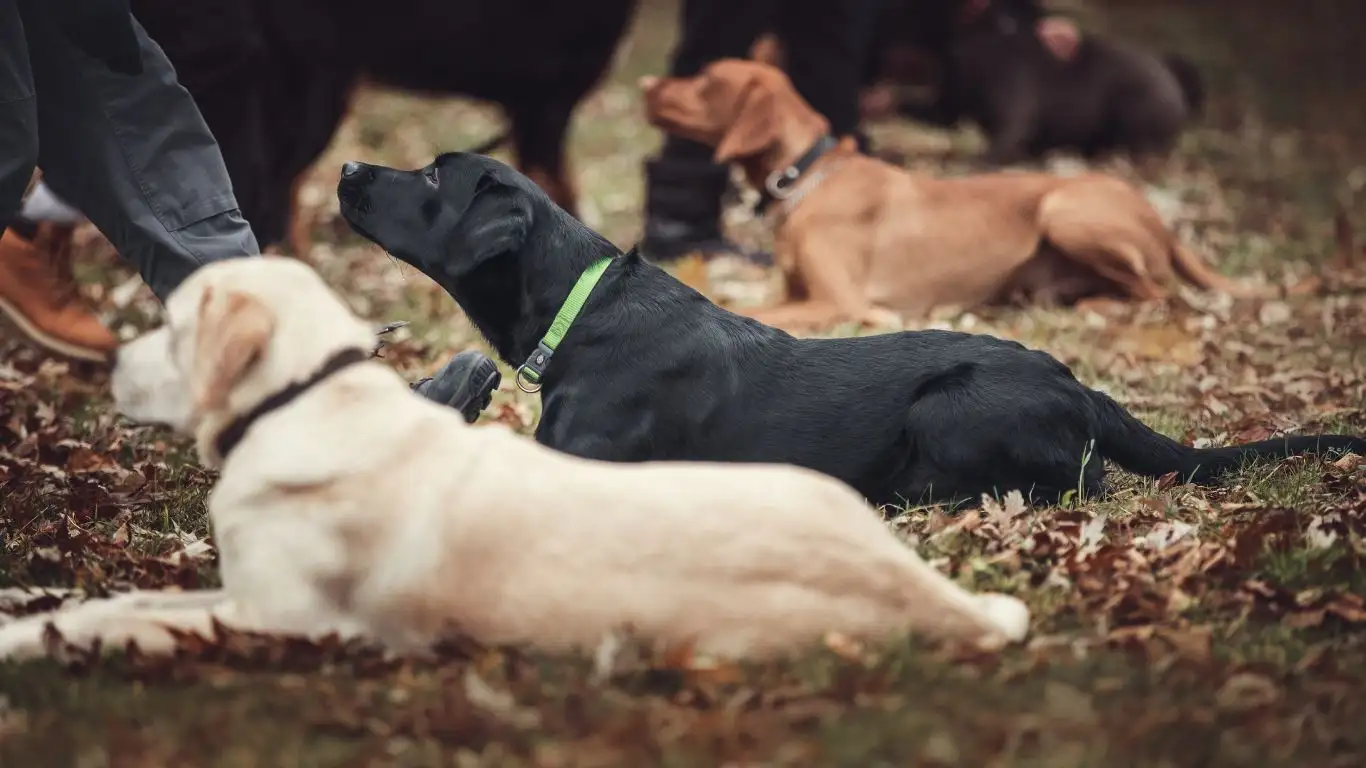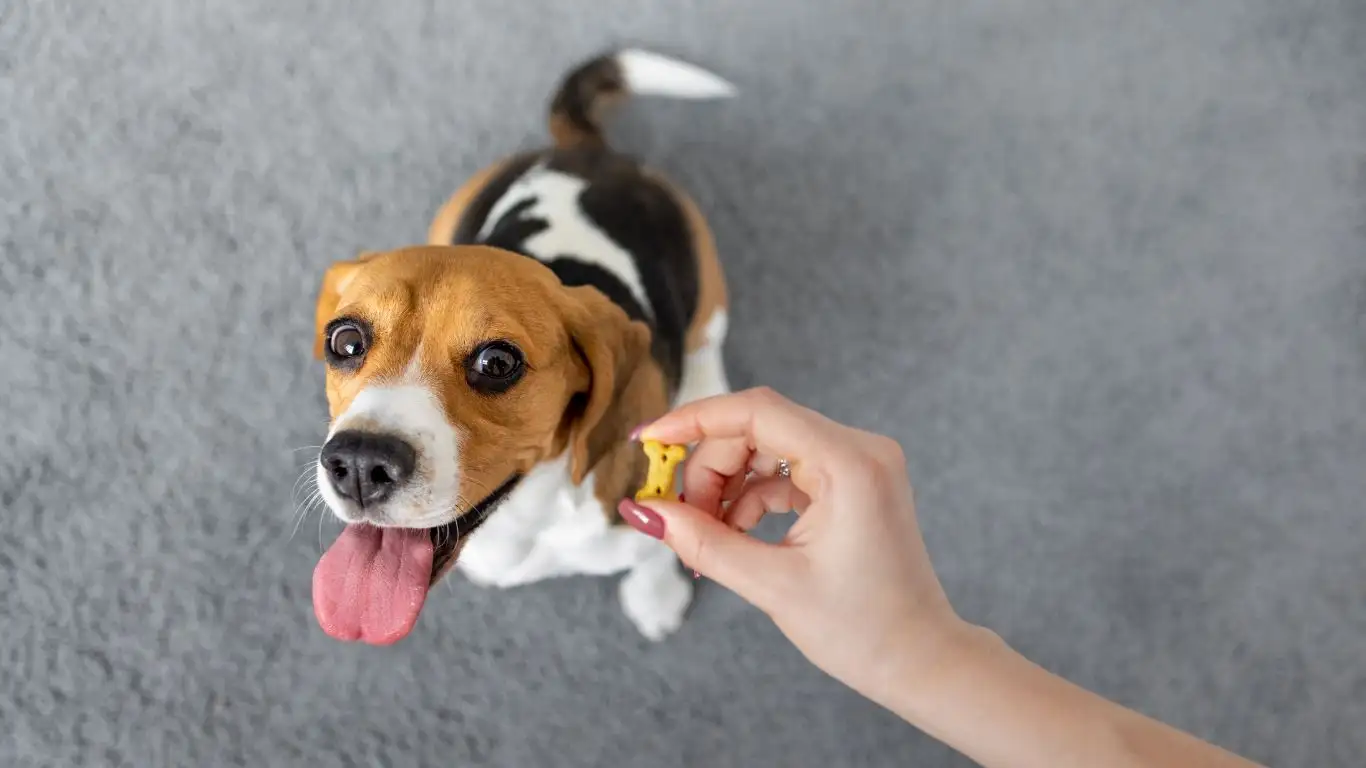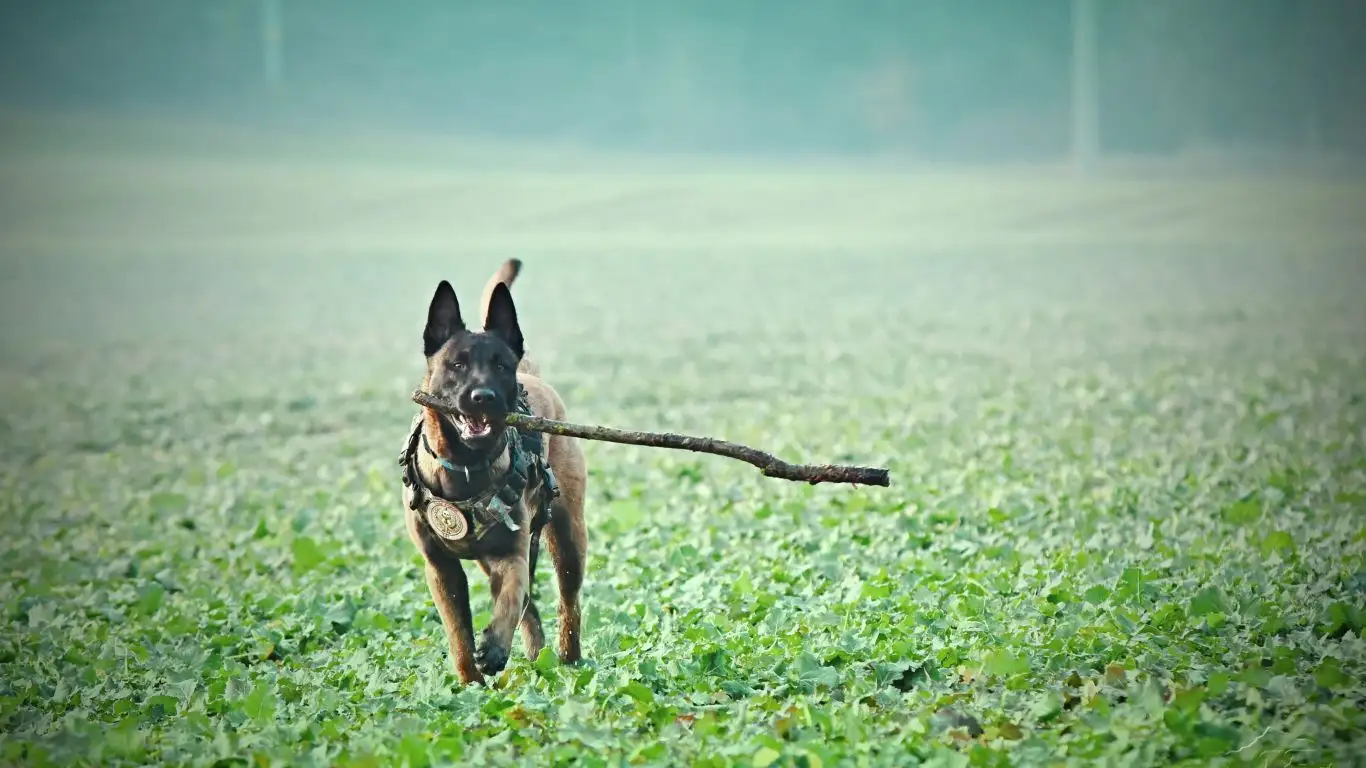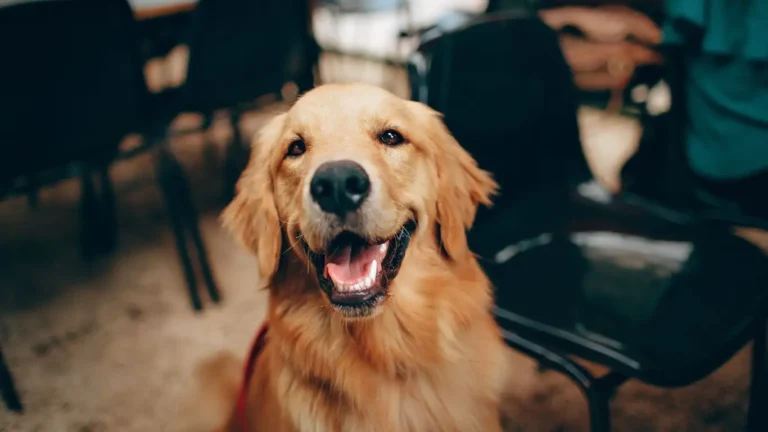Stop Your Dog’s Digging Problem Fast: Proven Training Tips!
There’s nothing more frustrating than stepping outside to find your garden looking like a war zone—holes everywhere, plants uprooted, and your once-pristine yard in total chaos. If you’re dealing with this, you’re not alone! A lot of dog owners struggle with figuring out how to train a dog to stop digging in the garden. I’ve been there too. As a Certified Professional Dog Trainer (CPDT-KA), I’ve worked with countless pups who just can’t resist tearing up flower beds like it’s their full-time job. But don’t worry—there’s hope! With the right techniques, patience, and a little bit of detective work, you can help your dog ditch the digging habit for good.
Why Do Dogs Dig? Understanding the Root Cause
Before we jump into training solutions, let’s first tackle the big question: why do dogs dig in the first place? The key to stopping this behavior is understanding what’s motivating your dog. Once you identify the “why,” you can address the issue at its core instead of just trying to stop the digging without a plan.
1. Instinct & Breed Tendencies
Some dogs are just born to dig. If you’ve got a terrier, beagle, or dachshund, congratulations—your pup comes from a long line of expert burrowers! These breeds were originally bred to hunt underground prey, so digging is practically in their DNA.
2. Boredom & Excess Energy
One of the biggest reasons dogs dig is sheer boredom. If your pup isn’t getting enough mental or physical stimulation, they’ll find ways to entertain themselves—unfortunately, that often involves turning your garden into a crater field. I had a Labrador client once who would dig massive holes just because he had too much pent-up energy. A simple tweak in his daily exercise routine made all the difference!
3. Cooling Off in Hot Weather
Have you ever noticed your dog digging a hole and then lying in it? That’s because the soil underneath the surface is cooler. On hot days, some dogs instinctively dig to create a natural, shady spot to beat the heat. If you live in a warm climate, this might be your dog’s way of staying comfortable.
4. Hiding Food, Toys, or “Treasures”
Dogs are natural hoarders! Some dig simply because they want to bury food, bones, or other “valuables” for safekeeping. It’s a survival instinct that dates back to their wild ancestors. While it’s adorable, it can also wreak havoc on your flower beds.
5. Anxiety & Stress
Just like humans have nervous habits (biting nails, tapping feet), dogs sometimes dig as a way to relieve stress or anxiety. Separation anxiety, changes in the household, or even loud noises can trigger this behavior. I once worked with a rescue pup who would dig furiously whenever his owner left for work—turns out, he was dealing with severe separation anxiety.
How to Train a Dog to Stop Digging in the Garden

Now that we know why dogs dig, let’s talk about how to stop it. The key is to approach training with patience, consistency, and the right strategies. Here’s what works:
1. Increase Exercise & Mental Stimulation
The first step in curbing unwanted digging is making sure your pup is getting enough exercise and mental engagement. A tired dog is a well-behaved dog!
- Daily Walks & Playtime: Make sure your pup is getting plenty of physical exercise. A long walk, a game of fetch, or a fun agility course in the backyard can help burn off extra energy.
- Interactive Toys & Puzzle Games: Keeping your dog’s mind busy is just as important as physical exercise. Puzzle feeders, snuffle mats, and frozen Kong toys are great boredom busters.
- Obedience Training Sessions: Teaching new commands or reinforcing old ones can provide great mental stimulation. Training sessions don’t have to be long—just 5-10 minutes a few times a day can make a huge difference.
2. Create a Designated Digging Spot
If your dog absolutely loves digging, you might not be able to stop the behavior completely. Instead, try redirecting it! A “digging zone” is a great way to let them indulge their natural instincts without destroying your yard.
- Pick a Spot: Choose an area in your yard where it’s okay for your dog to dig—maybe a sandpit or a designated corner.
- Encourage Digging There: Bury toys, treats, or bones in the spot to encourage your pup to dig only in that area.
- Reward Good Behavior: Praise and reward your dog whenever they dig in the correct spot. This helps reinforce the behavior you want.

3. Modify the Environment to Make Digging Less Appealing
Sometimes, the best way to stop a behavior is to make it less rewarding. If your pup keeps going back to the same spots, try these deterrents:
- Use Large Rocks or Chicken Wire: Placing rocks or wire mesh in areas where your dog digs can discourage them from trying again.
- Spray Citrus or Vinegar: Dogs dislike the smell of citrus and vinegar. Spraying these scents in digging areas may help deter them.
- Provide More Shade & Cooling Options: If your dog is digging to cool off, make sure they have a shady area, a cooling mat, or even a kiddie pool to keep them comfortable.
Training your dog to stop digging takes time, but with the right approach, you’ll start seeing progress. The key is understanding why your dog is digging and addressing the root cause rather than just punishing the behavior. Stay patient, stay consistent, and most importantly—make training fun for both of you!
Training Techniques to Reinforce Good Behavior

Alright, now that we’ve covered why dogs dig and how to manage the environment, let’s talk about actual training techniques. Stopping the behavior isn’t just about preventing access to your garden—it’s about reinforcing good habits.
1. Positive Reinforcement: Reward the Good, Ignore the Bad
Dogs learn best when they associate their actions with rewards. That’s why positive reinforcement is my go-to strategy for almost every training scenario, including stopping unwanted digging.
- Catch Them in the Act: If you see your dog digging, redirect them immediately. Call their name in an excited, happy tone to get their attention.
- Offer a Better Alternative: Lead them to their designated digging spot (if you have one) or give them an appropriate outlet like a chew toy.
- Reward & Praise: The moment they stop digging or engage with the correct behavior, reward them with a treat, petting, or verbal praise like, “Good job, buddy!”
Consistency is key here. If you reward your dog for stopping the digging sometimes but ignore it at other times, they’ll be confused about what’s expected.
2. The “Leave It” or “No Dig” Command
Teaching your dog a simple command like “leave it” or “no dig” can be a game-changer. Here’s a step-by-step guide to training this:
- Introduce the Command: When your dog starts digging, firmly but calmly say, “No dig” or “Leave it.”
- Redirect Immediately: Guide them away from the digging spot and toward an appropriate activity.
- Reward for Compliance: The moment they stop and listen, offer a treat or praise to reinforce the behavior.
- Practice Regularly: Like any command, repetition and consistency will help solidify this in your dog’s mind.
Some dogs pick this up quickly, while others might take a few weeks—be patient! I once worked with a husky who took nearly a month to get the “leave it” command down because his stubborn streak was a mile long. But once he got it, his digging obsession was cut in half!
3. Supervision & Redirection
If your dog is a persistent digger, the best way to train them is through active supervision. When they’re outside, keep an eye on them. If they start digging, interrupt the behavior, redirect them, and reward them for stopping.
For times when you can’t supervise, try using a leash or a long lead while they’re in the yard. This allows you to intervene quickly if needed.
Preventing Digging When You’re Not Home

Let’s be real—we can’t watch our dogs 24/7. So what can you do to prevent digging while you’re away? Here are some effective solutions:
1. Dog-Proof Your Yard
Making your yard less dig-friendly is a great preventative measure. Try these:
- Block Off Problem Areas: Use fencing, garden beds with rocks, or barriers to keep your dog out of specific zones.
- Provide More Engaging Activities: Leave interactive toys, food puzzles, or even a stuffed Kong to keep them busy.
- Use a Safe Playpen or Enclosed Area: If you have a serious digger, consider setting up a designated outdoor space where they can roam freely without access to garden beds.
2. Try Anti-Digging Deterrents
Some natural deterrents can discourage digging behavior:
- Citrus Peels or Vinegar: Dogs dislike the scent of citrus and vinegar. Sprinkling some in problem areas may help.
- Motion-Activated Sprinklers: A well-timed burst of water can startle dogs and teach them to avoid certain spots.
- Chicken Wire Under Soil: Laying wire mesh just below the surface can make digging less satisfying for dogs.
3. Give Them a Doggy Playmate
Sometimes, digging is just a sign of boredom. If your dog enjoys socializing, a playmate—either another dog in the household or regular playdates—can help burn off excess energy in a more constructive way.
What Not to Do When Stopping Digging

It’s important to correct digging behavior the right way. Here are a few things you shouldn’t do:
1. Never Punish After the Fact
Dogs live in the moment. If you come home and find a fresh hole, but punish your dog after the fact, they won’t connect the punishment with their action. Instead, they’ll just feel confused or scared.
2. Avoid Harsh Punishments
Shouting, hitting, or using shock collars doesn’t help. In fact, it can create fear-based behavior problems. Positive reinforcement is much more effective in the long run.
3. Don’t Use “Booby Traps” That Could Harm Your Dog
Some people try placing sharp objects, harsh chemicals, or other harmful deterrents in digging areas. This is not only cruel but also dangerous. There are safer, more humane ways to discourage digging.
Training takes time, patience, and a bit of creativity, but with consistency, your dog will learn! Next, we’ll dive into how to reinforce these behaviors for long-term success.
Reinforcing Good Behavior for Long-Term Success

So, you’ve put in the work, and your dog is starting to dig less. That’s amazing! But how do you ensure these new habits stick around for the long haul? Training isn’t just about stopping bad behavior—it’s about reinforcing the good behavior consistently.
1. Keep Rewarding Non-Digging Behavior
Even after your dog seems to have kicked the digging habit, continue rewarding them for good behavior. If they spend time outside without digging, praise them, give them a treat, or initiate playtime. This reinforces that not digging equals positive outcomes.
2. Make Outdoor Time Engaging
Boredom is a big reason why dogs dig. To keep their minds occupied:
- Rotate Toys: Introduce new toys or rotate existing ones to keep things fresh.
- Engage in Training Games: Hide treats in the yard for a scavenger hunt or practice new commands.
- Schedule Regular Walks & Playtime: A tired dog is a happy (and well-behaved) dog!
3. Stay Consistent with Boundaries
Dogs thrive on consistency. If you’ve established certain areas as off-limits for digging, stick to it. If you let them get away with it “just this once,” they’ll take that as permission to do it again.
Addressing Setbacks: What If My Dog Starts Digging Again?

Even with solid training, setbacks happen. If your pup starts digging again, don’t panic! Here’s what to do:
1. Identify the Trigger
Ask yourself:
- Has anything changed in their routine?
- Are they getting enough mental and physical stimulation?
- Are there new stressors, like loud noises or other animals?
Understanding the cause helps you adjust your approach accordingly.
2. Reinforce Training Techniques
Go back to basics—use the “leave it” command, reward alternative behaviors, and supervise outdoor time more closely until they’re back on track.
3. Stay Patient
Training isn’t linear. Dogs, like humans, have good days and bad days. Stay positive, keep reinforcing good behavior, and celebrate progress—even if it’s small.
Final Thoughts: Digging Doesn’t Have to Be a Battle
Every dog is different, and some may be more persistent diggers than others. The key to success is a combination of training, patience, and environmental management. When you understand why your dog digs and address their needs, you’ll see a significant improvement in their behavior.
Remember, your pup isn’t trying to destroy your garden out of spite—they’re just being a dog! By working with their natural instincts instead of against them, you can create a happy balance that keeps both your garden and your furry friend in harmony.
References
- American Kennel Club (AKC) – Expert dog training resources and behavior tips.
- ASPCA – Information on animal behavior and humane training techniques.
- The Humane Society – Positive reinforcement training methods.
Disclaimer
This article is for informational purposes only and should not replace professional advice from a certified dog trainer or veterinarian. If your dog’s digging behavior is excessive or linked to anxiety, consult with a professional to develop a customized training plan.






